
Aelbert Jacobszoon Cuyp was one of the leading Dutch Golden Age painters, producing mainly landscapes. The most famous of a family of painters, the pupil of his father, Jacob Gerritszoon Cuyp (1594–1651/52), he is especially known for his large views of Dutch riverside scenes in a golden early morning or late afternoon light. He was born and died in Dordrecht.

In art history, "Old Master" refers to any painter of skill who worked in Europe before about 1800, or a painting by such an artist. An "old master print" is an original print made by an artist in the same period. The term "old master drawing" is used in the same way.

Jan van Scorel was a Dutch painter, who played a leading role in introducing aspects of Italian Renaissance painting into Dutch and Flemish Renaissance painting. He was one of the early painters of the Romanist style who had spent a number of years in Italy, where he thoroughly absorbed the Italian style of painting. His trip to Italy coincided with the brief reign of the only Dutch pope in history, Adrian VI in 1522–23. The pope made him a court painter and superintendent of his collection of antiquities. His stay in Italy lasted from 1518 to 1524 and he also visited Nuremberg, Venice and Jerusalem. Venetian art had an important impact on the development of his style.

Adriaen Isenbrandt or Adriaen Ysenbrandt was a painter in Bruges, in the final years of Early Netherlandish painting, and the first of the Dutch and Flemish Renaissance painting of the Northern Renaissance. Documentary evidence suggests he was a significant and successful artist of his period, even though no specific works by his hand are clearly documented. Art historians have conjectured that he operated a large workshop specializing in religious subjects and devotional paintings, which were executed in a conservative style in the tradition of the Early Netherlandish painting of the previous century. By his time, the new booming economy of Antwerp had made this the centre of painting in the Low Countries, but the previous centre of Bruges retained considerable prestige.
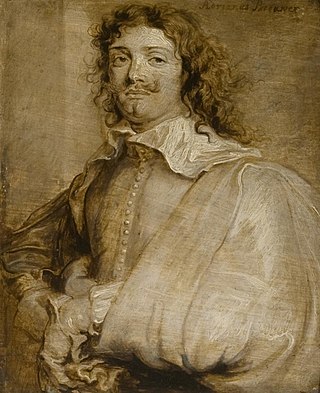
Adriaen Brouwer was a Flemish painter active in Flanders and the Dutch Republic in the first half of the 17th century. Brouwer was an important innovator of genre painting through his vivid depictions of peasants, soldiers and other "lower class" individuals engaged in drinking, smoking, card or dice playing, fighting, music making etc. in taverns or rural settings. Brouwer contributed to the development of the genre of tronies, i.e. head or facial studies, which investigate varieties of expression. In his final year he produced a few landscapes of a tragic intensity. Brouwer's work had an important influence on the next generation of Flemish and Dutch genre painters. Although Brouwer produced only a small body of work, Dutch masters Peter Paul Rubens and Rembrandt collected it.

Antwerp Mannerism is the name given to the style of a group of largely anonymous painters active in the Southern Netherlands and principally in Antwerp in roughly the first three decades of the 16th century, a movement marking the tail end of Early Netherlandish painting, and an early phase within Dutch and Flemish Renaissance painting. The style bore no relation to Italian Mannerism, which it mostly predates by a few years, but the name suggests that it was a reaction to the "classic" style of the earlier Flemish painters, just as the Italian Mannerists were reacting to, or trying to go beyond, the classicism of High Renaissance art.

Mayken Verhulst, also known as Marie Bessemers, was a sixteenth-century miniature, tempera and watercolor painter, identified by Lodovico Guicciardini in 1567 as one of the four most important female artists in the Low Countries. She was actively engaged in the workshop of her husband, Pieter Coecke van Aelst, posthumously publishing his works. While she is recognized as an exceptionally skilled artist, little is known about her works or life as there are few surviving attributable sources of information.

Jan van Dornicke was a South Netherlandish painter who was born in Doornik in about 1470 and died about 1527. His first name is sometimes spelled "Janssone", and his last name is sometimes spelled "van Doornik" or "van Dornick". He was active in Antwerp from about 1509 to about 1525. His paintings are classified stylistically as Antwerp Mannerism, and he may be the same person as the Master of 1518. This Jan van Dornicke should not be confused with an eighteenth-century Dutch artist who had the same name.
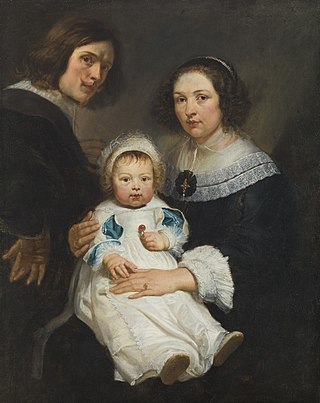
Erasmus Quellinus the Younger or Erasmus Quellinus II (1607–1678) was a Flemish painter, engraver, draughtsman and tapestry designer who worked in various genres including history, portrait, allegorical, battle and animal paintings. He was a pupil of Peter Paul Rubens and one of the closest collaborators of Rubens in the 1630s. Following Rubens' death in 1640 he became one of the most successful painters in Flanders. He was a prolific draughtsman who made designs for decorative programmes in the context of official celebrations, for publications by the local publishers and for tapestries and sculptures realised by the local workshops. His work reveals the Classicist trend in the Baroque.
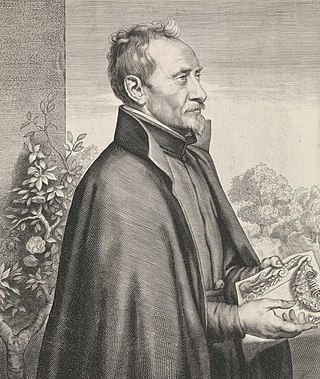
Daniël Seghers or Daniel Seghers was a Flemish Jesuit brother and painter who specialized in flower still lifes. He is particularly well known for his contributions to the genre of flower garland painting. His paintings were collected enthusiastically by aristocratic patrons and he had numerous followers and imitators.

Jan Porcellis was a Dutch marine artist in the seventeenth century. His works initiated a "decisive transition from early realism to the tonal phase", fostering a new style and subject in marine painting by focusing on overcast skies and rough waters, a radical break from maritime art's previous focus on the grandeur of ships in historical settings. This style of greater simplicity surrounding maritime art, with the majority of the canvas displaying sea and sky, set the grounds for later works in this genre.

The Master of Alkmaar was a Dutch painter active around Alkmaar at the beginning of the sixteenth century. Their name is derived from a series of panel paintings from the church of Saint Lawrence in that city, dated to 1504 and showing the Seven Works of Mercy; they are currently in the Rijksmuseum in Amsterdam.
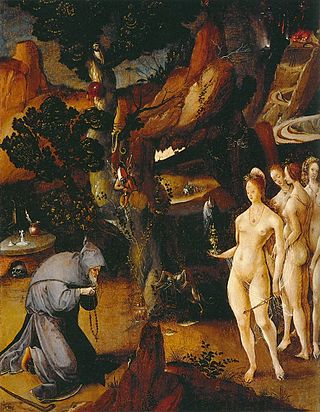
Jan Wellens de Cock was a Flemish painter and draftsman of the Northern Renaissance.

Ezekiel's Vision is a c. 1518 painting by Raphael showing the prophet Ezekiel's vision of God in majesty. It is housed in the Palatine Gallery of Palazzo Pitti, Florence, central Italy.

Peeter Gijsels or Pieter Gijsels, was a Flemish Baroque painter. He is known for his landscapes, architectural compositions and still lifes. His landscapes in the style of Jan Brueghel the Elder were very sought after in his time. He is also regarded as a genre painter as he painted village scenes of village markets and kermises.
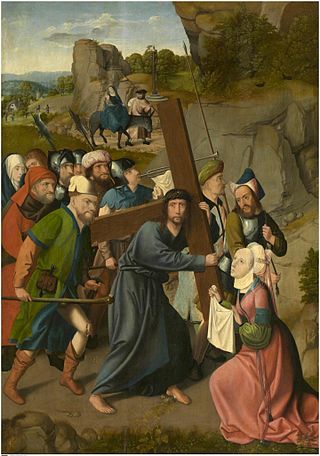
The Master of Hoogstraeten is the Notname given to a Flemish painter or a collective of painters active in Antwerp in the early 16th century. The master created principally religious paintings and is considered a member of the Antwerp Mannerists.

The Master of the Prodigal Son, was the notname given to a Flemish painter and designer of tapestries and stained glass. He was active in Antwerp where he operated a large workshop between 1530 and 1560. He painted religious subjects, landscapes, genre scenes and allegories. He is regarded as a leading master of Flemish Mannerism in the sixteenth century.

Master of the Figdor Deposition (1480–1500), was an Early Netherlandish painter.

The Brueghel family, also spelled Bruegel or Breughel, is an extended family of Dutch and Flemish painters which played a major role in the development of the art in Brabant and Flanders throughout the 16th and 17th centuries. Due to the organisation in guilds and training being done with established painters and not in schools or academies, painters often passed on the knowledge from father to son, and there are many examples of Flemish painting families spanning two or more generations, e.g. the Francken family, which had at least ten painters spanning four generations. The Brueghel family produced the largest number of major painters of all Flemish families.

The Master of the Von Groote Adoration is a notname given to an artist or a number of artists or various workshops active in Antwerp sometime between 1500 and 1520. Whereas there are significant variations in the style of the works attributed to the master, the repetitions of certain subjects played an important role in the composition of the oeuvre. The master is considered a representative of the group of Antwerp mannerists who created works in an extravagant style in the early sixteenth century.




















